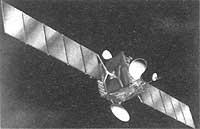Obstacles to the conquest of Martitz
In the two previous copies, the spatial study plans of the Americans and Soviets have been explained and, in particular, the study of Martitz and the intentions of making a trip equipped to go to it through several articles. But perhaps we have not talked enough about the problems of the different types that this type of equipped travel poses. When talking about the Tuesday project, we are in danger of taking as a reference the only similar journey (which led man to the Moon), completely despising the difficulties that must be overcome to go to the red planet. The difference between both trips lies, logically, in their duration. In addition, the problems arising from the duration of the trip to Mars refer not only to the supply but also to the health of astronauts. But we will develop these points more slowly.
When planning the trip to Martitz there are two options. The first is that Martitz and the Earth are closer (i.e., in opposition) to be able to make the trip with as little fuel as possible. But in this case we should also return to the next opposition. Therefore, astronauts should wait about a year and a half on Mars or Martitz orbit to retake the Earth. In total, it would take three years to carry out the mission. The second option would be to make a trip as short as possible, with two weeks of stay. In this case the fuel load would be much higher, but it would be compensated with the one that would advance in the supplies. In this second case, you could also ship the cargo on another previously launched boat. In this case the trip would last approximately one and a half years.

In any case, it is clear that the duration of the trip is what makes the difference between the missions equipped and the previous one. Keep in mind that health problems resulting from living so long in microgravity are still not known too much. The Soviets are the ones who have researched this subject the most, but Juri Romanenko is the longest remaining in space (MIR station) and the 326 days he has stayed there are only half of what the shortest trip to Mars would last. Weightlessness is already known as weakness of the heart. Something similar happens with the bones. Heel bone, for example, loses ten percent of its strength after eight months, but if it is not through experience, it is not known if these degenerations accelerate over time.
If we focus on the area of supply, we must bear in mind that this trip, with these particularities, requires designing an appropriate system of recycling of air, water and waste. It is estimated that the oxygen consumption of each cosmonaut is about five tons and that of water about half. We also have to think about the food supply, estimating around a ton more.
Technical approaches that are not directly related to cosmonauts also have many particularities. Communications will suffer major delays in some of the phases of the journey, as the waves will take half an hour to reach from space to Earth. Sometimes, in addition, communication will not be possible, since the Sun will intervene.
Another factor to keep in mind is cosmic radiation and solar activity. The space battery will be constantly bombarded with subabsorbent fractions, the strongest being the effects of solar flares. Of course, you will have to find a shield against all this. A possible solution would be to surround the astronaut modules with water filled containers. About 4,000 kg of water would provide astronauts with the necessary protection.
These are some of the issues that arise. But to finish we have to talk again about the load problem. When equipped to meet all needs and close to starting the journey, the minimum weight of space activity is considered to be 1,000 tons or perhaps 2,000 tons. This poses a last and very important problem. The most powerful launcher currently available for shooting is the Soviet Energia, which can put into orbit a maximum weight of 100 tons. The classic launcher and the American Space Shuttle cannot load more than 20 tons. Consequently, the mission to Mars must be mounted in orbit. Both great powers are working on the preparation of suitable stations in which modules of space activity manufactured on Earth must be assembled. Therefore, there will not be few trips before the station. More than half to carry fuel.
These are the most important previous knots to release to make the trip to Mars possible.





